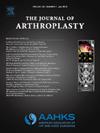门诊手术中心手术时间之外的全髋关节手术方法效率。
IF 3.8
2区 医学
Q1 ORTHOPEDICS
引用次数: 0
摘要
背景:门诊手术中心(ASC)对全髋关节置换术(THA)的需求正在迅速增长。考虑到不同的手术方法及其对时间的不同要求,提高非住院手术中心的效率对于管理不断增长的需求至关重要。优化效率有助于满足需求,同时确保安全及时的当日出院(SDD)。本研究考察了门诊 ASC THA 患者在每个护理阶段所花费的时间、SDD 的成功率和延迟时间,以及包括估计失血量、90 天并发症发生率和 1 年患者报告结果在内的手术结果:在 2019 年 1 月 1 日至 2021 年 1 月 1 日期间,对一家独立的 ASC 的所有初级 THA 患者进行了回顾性审查。记录了人口统计学、基线功能、护理阶段时间、围术期结果、90 天并发症和患者报告结果,并按手术方式进行分层比较。比较采用双尾 t 检验和费雪精确检验。我们还进行了多变量双向逐步回归分析,以控制各组人口统计学因素的差异,如年龄、性别、体重指数(BMI)、术前辅助设备使用情况、术前课堂出席率、美国麻醉医师协会(ASA)评分、查尔森综合指数和术前诊断:我们的组别在年龄、体重指数、辅助设备使用情况、术前课堂出勤率和术前退伍军人兰德 12 项健康调查(VR-12)身体成分评分(PCS)方面存在差异。除了脊柱治疗时间和麻醉后护理病房(PACU)的总物理治疗(PT)时间外,直接前路(DAA)和后路(PA)两组患者在每个护理阶段所花费的时间都有显著差异。在脊柱状态到切口时间(26.8 ± 10.9 对 35.0 ± 10.1;P < 0.001)、设置/取下时间(20.5 ± 5.8 对 30.2 ± 8.2;P < 0.001)、手术时间(37.5 ± 14.5 对 50.0 ± 14.5;P < 0.001)、术后护理(PACU)总物理治疗(PT)时间方面,直接前路方法比 PA 更快。5±14.5对50.4±6.7;P<0.001)、手术室(OR)总时间(57.8±17.4对80.5±11.4;P<0.001)和到达出院时间(383.8±71.2对418.4±60.8;P<0.001)。在启动 PT 时间(46.3 ± 25.1 对 71.4 ± 34.7;P < 0.001)、PACU 到达 PT 清理时间(124.9 ± 42.3 对 144.3 ± 47.8;P < 0.001)和 PACU 总时间(127.8 ± 47.4 对 143.4 ± 47.8;P < 0.001)方面,PA 均快于 DAA。手术方式、年龄、体重指数和术前使用辅助设备是导致护理阶段时间差异的最常见预测因素。脊柱过度是延迟物理治疗的最常见原因。90天并发症与手术方式无关,患者报告的12周、26周或52周的结果也无明显差异:结论:与PA相比,直接前路手术方法的到达到出院时间和手术室总时间更短,患者报告的结果(PROs)和并发症相似。两种方法在实现 SDD 方面同样有效。手术时间和安装/拆卸时间是DAA组提高效率的主要原因。DAA组开始PT的时间较长,这是因为标准脊柱阻滞时间和较短的手术时间。本文章由计算机程序翻译,如有差异,请以英文原文为准。
Total Hip Surgical Approach Efficiency Outside of Surgical Time in the Ambulatory Surgical Center
Background
Rising demand for total hip arthroplasty (THA) in ambulatory surgery centers (ASCs) requires improved efficiency, considering varying surgical approach time requirements, to manage caseloads and ensure safe same-day discharge (SDD). This study examines care phase durations, SDD success and delays, and outcomes, including 90-day complication rates and 1-year patient-reported outcomes (PROs).
Methods
A retrospective review of primary THA patients at a single ASC (January 2019 to January 2021) was conducted. Data on demographics, phase-of-care times, perioperative outcomes, 90-day complications, and PROs were stratified by surgical approach. Comparison was done using 2-tailed t-test and Fisher exact test. Stepwise regression controlled for age, gender, body mass index, assistive device use, class attendance, American Society of Anesthesia score, Charlson comorbidity index, and diagnosis.
Results
Groups differed in age, BMI, assistive device use, class attendance, and preoperative Veterans Rand 12-Item Health Survey physical component scores. The direct anterior approach (DAA) and posterior approach (PA) cohorts showed significant differences in phase-of-care times, except for spinal-time, and total-physical therapy (PT)-time-in-postanesthesia care unit (PACU). DAA was faster in spinal-start-to-incision-time (26.8 versus 35.0; P < 0.001), set-up/take-down-time (20.5 versus 30.2; P < 0.001), operative time (OR; 37.5 versus 50.4; P < 0.001), total operating room time (57.8 versus 80.5; P < 0.001), and arrival-to-discharge-time (383.8 versus 418.4; P < 0.001). PA was faster in time-to-initiation-of-PT (46.3 versus 71.4; P < 0.001), PACU-arrival-to-PT-cleared-time (124.9 versus 144.3; P < 0.001), and total-PACU-time (127.8 versus 143.4; P < 0.001). Surgical approach, age, BMI, and preoperative assistive device use predicted time differences. Excessive spinal was the main cause of PT delays. No differences in 90-day complications or PROs were observed.
Conclusions
DAA showed shorter total OR and arrival-to-discharge-times compared to PA, with similar complications and PROs. Both approaches effectively achieved SDD. Operative and set-up/take-down-time drove DAA efficiency, but PT initiation was delayed due to standard spinal blocks with shorter OR times.
求助全文
通过发布文献求助,成功后即可免费获取论文全文。
去求助
来源期刊

Journal of Arthroplasty
医学-整形外科
CiteScore
7.00
自引率
20.00%
发文量
734
审稿时长
48 days
期刊介绍:
The Journal of Arthroplasty brings together the clinical and scientific foundations for joint replacement. This peer-reviewed journal publishes original research and manuscripts of the highest quality from all areas relating to joint replacement or the treatment of its complications, including those dealing with clinical series and experience, prosthetic design, biomechanics, biomaterials, metallurgy, biologic response to arthroplasty materials in vivo and in vitro.
 求助内容:
求助内容: 应助结果提醒方式:
应助结果提醒方式:


